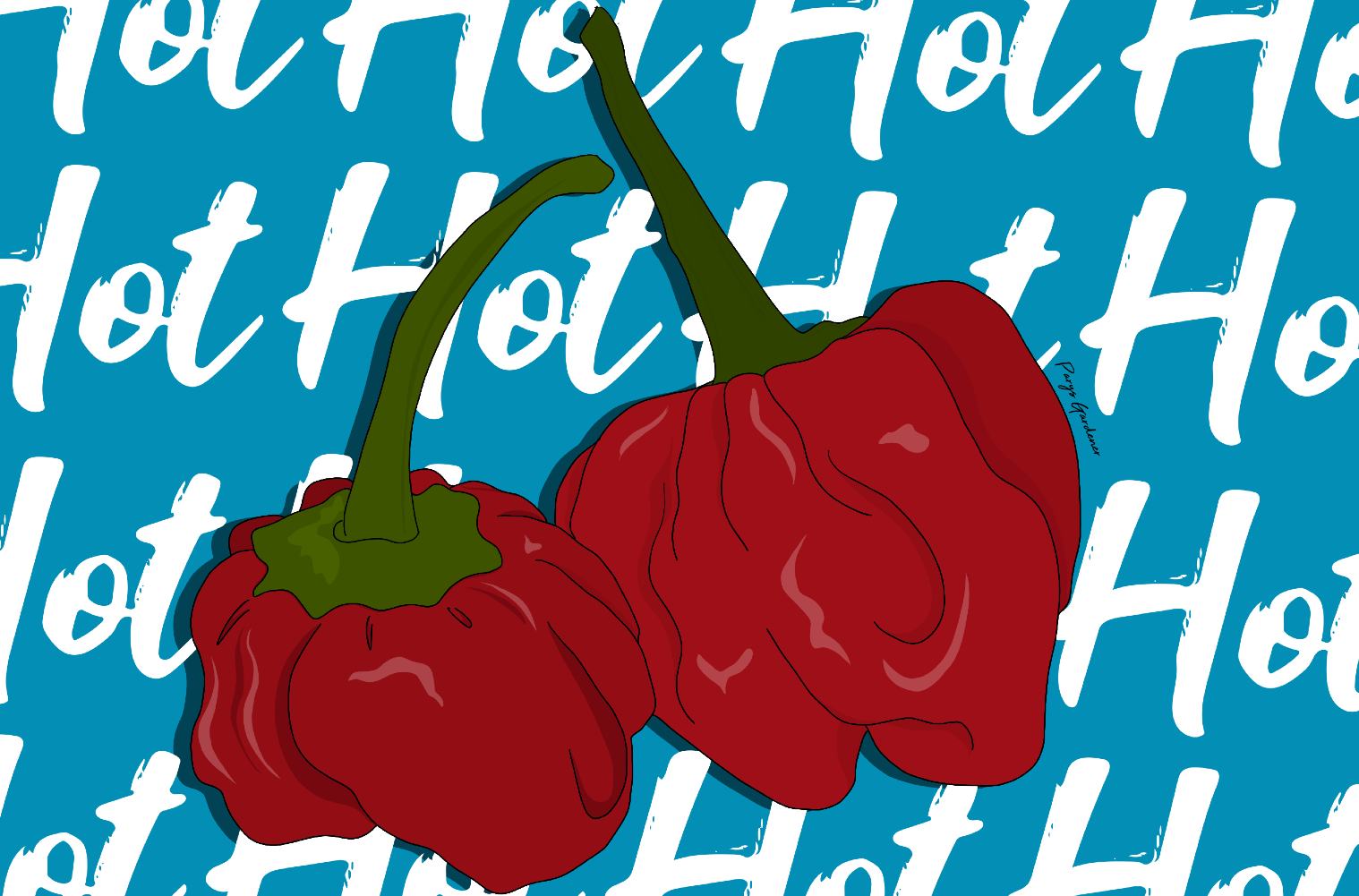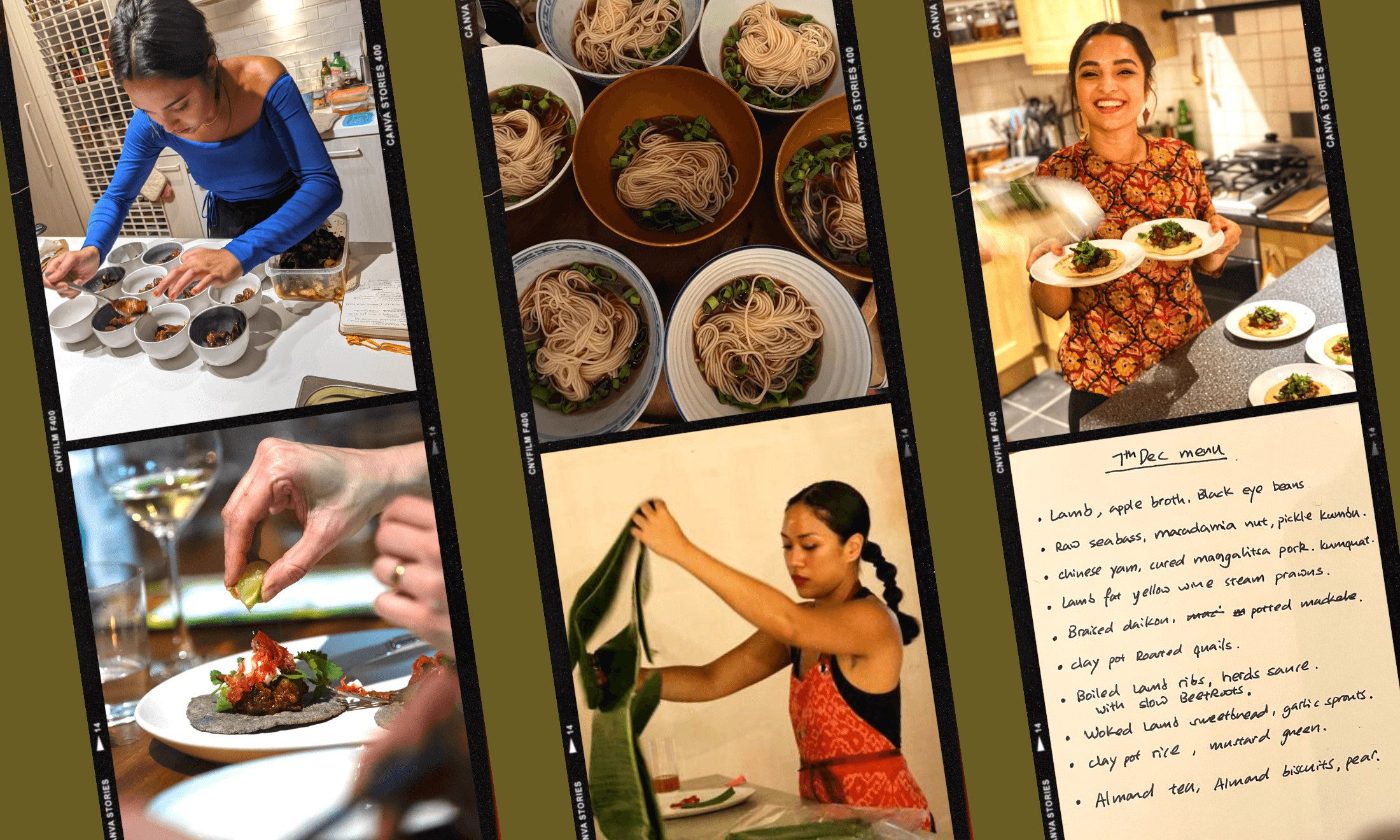
Illustration by Parys Gardner
My mother’s masala dabba is an object of my childhood. It is essentially a tin circular dish that holds separate compartments where powdered combinations of turmeric, cumin, chilli and garam masala are kept. In South Asian cuisine, fragrant pilaus and buttery salans are often laced with cardamom pods and cinnamon sticks to bring out the unique flavour of each recipe. I’m no food critic, but when I occasionally eat out at restaurants like Dishoom, I am slightly disappointed when mouth-watering dishes like “Dishoom chicken tikka“ and “kachumber“ taste under-spiced, erring on the side of blandness.
Last night, like most Tuesday evenings in September, I found myself sandwiched between two cushions with a tea and a biscuit in hand, switching on the TV to watch The Great British Bake Off. The amateur baking reality show manages to whip up a perfect balance of comfort viewing and competitive spirit. This week’s episode tempted viewers with a variety of spiced breads, all encased inside a perfect shell of golden crust.
The episode started the same as any other, with the baker’s dozen throwing around appropriate bread-related puns. With the bakers using ingredients ranging from charcoal to seaweed, I was surprised that judges Prue Leith and Paul Hollywood were most intrigued by an “exotic” tear n’ share bake inspired by Keralan flavours like coconut and chilli. The contestant in question was Michael Chakraverty, a 26-year-old theatre manager and fitness instructor raised in Scotland whose bakes are heavily infused by spices from his Indian heritage.
As soon as Michael introduced his “Keralan Star Bread” Paul and Prue raised their eyebrows at “what’s rapidly becoming his [Michael’s] trademark, a kick of chilli”. They both chuckled uncomfortably and asked him to ease off the spices, before turning to contestant Priya O’Shea’s “Smoky Jalapeño”. Again, Prue gave a little smirk when asking how spicy the bread would be, and Priya had to reassure the judges that she had adapted her recipe to match their taste buds. Since moving away from her family home, she explained, she now uses less and less spice and no longer flavours her food to accommodate her Dad’s taste, who she mentions “eats chilli on the side of curry”.
I’m no food expert, but the interactions such as these made me realise why South Asian restaurateurs, such as those who run Dishoom, may be diluting their recipes to pander to Western tastebuds. After all, they need to make a living as much as the next person.
Instances of flavouring food with less spice to accommodate a Western palate are not unusual, and they certainly aren’t confined to reality shows like GBBO, who even had a “Spice Week” last year. The phenomenon of accommodating a multitude of palates and providing people with fusions of different culinary lineages can inspire delectable new recipes. Ingredients that wouldn’t conventionally find themselves on the same plate can coalesce to create crispy Portuguese salt cod alongside sweet Malaysian satay.
Cooks and food-lovers alike have in fact invested in “fusion food” for centuries. British colonialists for example altered Indian rice and lentil recipes such as kichiri to form kedgeree, perhaps a less flavourful version of the dish. Whilst kedgeree beautifully marries together flavours of fried onion and fiery ginger, it also leaves behind the bitter taste of colonial trauma. The acquiring of spices by European colonisers meant that cumin, cinnamon and turmeric were became more widely available across the continent; they were no longer a sign of food capital. Europe’s food snobbery complex meant that Indian restaurants were viewed as cheap and unrefined dining options, whilst French restaurants began to grace the Michelin Guide.
European food cuisines have long been held as a hallmark of exquisite food, ostensibly using techniques and flavour combinations that chefs worldwide should be aspiring to. In 2010, the wine-infused French dish boeuf bourguignon was added to UNESCO’s list of “intangible cultural heritage”. The stew had effectively cemented itself in food history.
Like UNESCO’s list, GBBO is a phenomenon that canonizes national culture. The name of the show emphasizes how it aims to celebrate British tradition, but this week’s episode showed spectators that there’s not much room for masala dabbas in Britain’s kitchens, even if they do make chilli-spiced tear n’ shares taste better than floury white baps.









